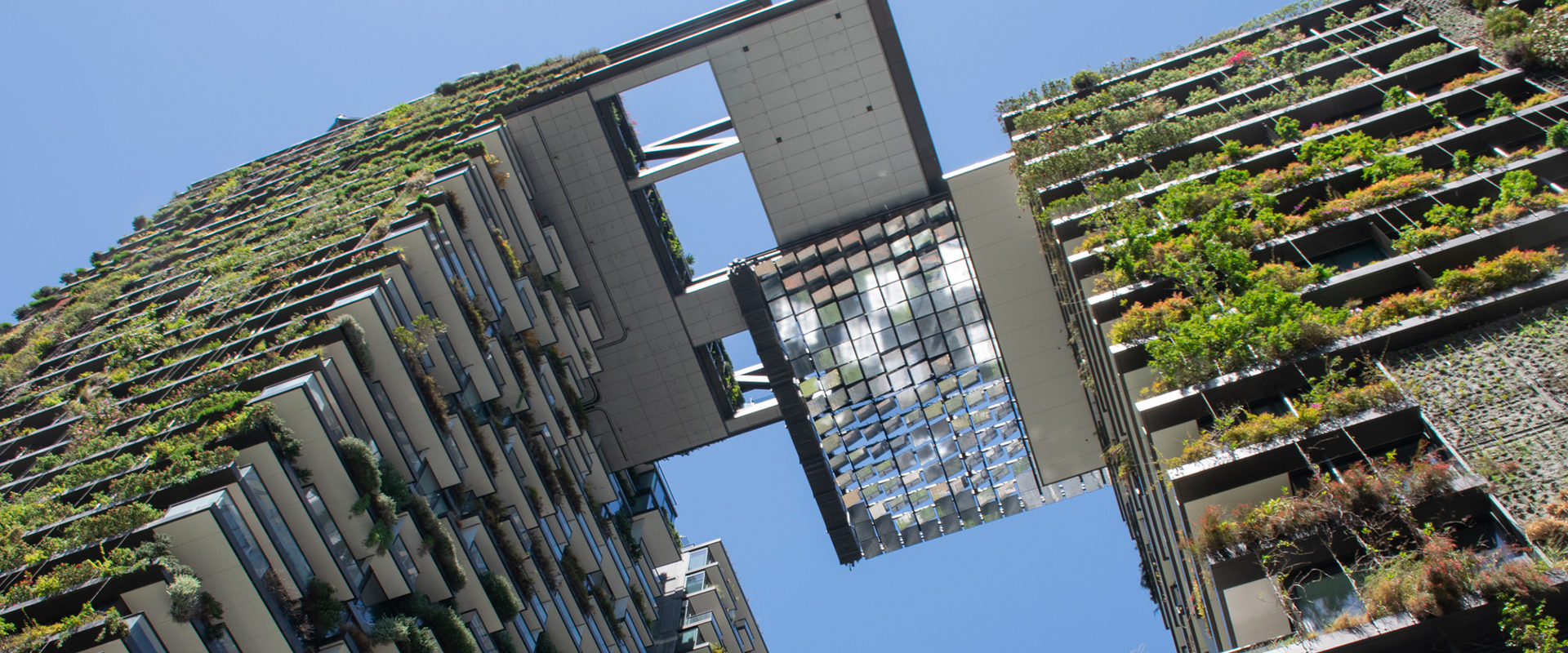Sustainable buildings reduce energy and water use and are a crucial component of urban planning that aims to mitigate climate change.
With the growing popularity of more sustainable energy sources, the real estate industry is also shifting to more green solutions. Buildings and constructions are becoming “greener” and more energy-efficient. Architecture and engineering firms are quickly adopting more environmentally friendly solutions for building design as a standard practice, focusing on sustainable building designs and green building construction.
Schneider Electric is one of such companies that supplies engineers with solutions for creating future-proof electrical systems that provide maximum energy efficiency over the course of a building’s existence. Do you want to discover the solutions and help build greener infrastructure? Read on to learn more about green buildings.
Green Buildings Market
As many people ask if green buildings are really green, a simple definition of a “green building” refers to a building that minimises or eliminates harmful effects on climate and the natural environment through its design, construction or operation. Green constructions protect priceless natural resources and improve people’s living standards.
As the building sector is one of the largest energy consumers in the EU, green buildings – the alternative to buildings that run on fossil fuel energy or poorly insulated ones – are becoming the norm. Consequently, the European Commission has announced a Renovation Wave to reduce energy usage and improve the performance of buildings across the EU by planning to renovate 35 million buildings by 2030, which could create 160,000 new ‘green jobs’ in the construction sector.
“The global green building materials market size reached US$ 346.4 Billion in 2023. Looking forward, IMARC Group expects the market to reach US$ 716.4 Billion by 2032, exhibiting a growth rate (CAGR) of 8.18% during 2024-2032. The growing environmental awareness among the masses, rising construction of various smart cities around the world, and increasing awareness about the importance of maintaining indoor air quality are some of the major factors propelling the market.”
Green Building Materials Market Report by Application (Insulation, Roofing, Framing, Interior Finishing, Exterior Siding, and Others), and Region 2024-2032, Market Research Report
How Can Smart Buildings Be the Future of Sustainability?
Green buildings are one of the main focuses industries use to reduce the impact of the real estate sector on the environment. Companies have to focus on alternative, recyclable and renewable materials, reducing energy consumption and waste in the construction process so that the building has a reduced impact on the environment over its lifespan, aligning with sustainable building certification standards.
Green buildings improve ecological, social and economic issues in their construction by how they are constructed. ‘Smart buildings’ that integrate building technology systems support green buildings with leveraged data and digital technology. Schneider Electric focuses on technology by implementing IoT-based metering systems, optimisation and automation from monitoring and maintenance through improvement.
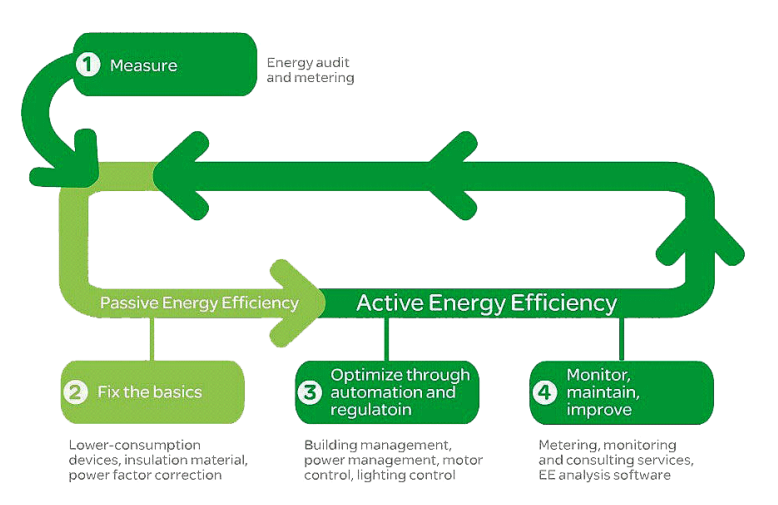
Watch the video below and discover how Schneider Electric contributes to a more decarbonised, digitised and electrified future of buildings and find out what has to be done to cut carbon emissions.
- Buildings renovation and making them more efficient through innovations and more advanced materials.
- Improved heating and electrification systems.
- Implemented energy consumption measures.
Renovation Rate & Electrification
Buildings are being transformed into ecosystems, creating more energy through solar panel generation, linking to the grid for electric vehicle charging, and having superior energy storage. Electrical systems are the core of the energy efficiency of buildings. Electrification is not vital only for the improvement of buildings but also for other sectors, such as transport, production, energy storage, and to support other renewable energy sources, like alternatives for heating, photovoltaic (PV) systems, microgrids, hydropower plants, and water energy.
Also, designs are crucial in greener infrastructure, considering the large number of existing building stock worldwide that could be renovated. Properly designed structures for changing existing buildings into green ones allow for retrofitting and sustainable renovation, improving the performance of the building. Then, making newly constructed and renovated buildings more comfortable and cost-effective to maintain is key, as well as teaching building users to be efficient. Implementing green building design and green building solutions can significantly enhance these efforts.
Transforming existing buildings into more sustainable ones requires:
- Innovative approach towards energy – minimises energy usage and, after maximising inherent and natural efficiencies in the architecture of the building, integrating renewable and low-carbon technology to meet the energy needs of the building is essential for energy conservation.
- Preserving the environment – advantage of preserving nature, diverse wildlife and land quality; constructing on contaminated land after remediation or establishing new green areas.
- Minimise waste – some activities focus on using organic and inorganic solid waste for more beneficial applications like composting and electricity generation, as well as recycling and reusing wastewater with the proper treatment, which are key aspects of sustainable waste management.
- Promoting wellbeing and health – bringing fresh air and delivering good indoor air quality; avoiding harmful substances and chemicals; ensuring the comfort of living through environments and the right temperature (monitoring systems, passive design, building management); incorporating natural light; reducing light energy needs are all part of sustainable building materials and green building strategies.
- Connecting people and infrastructures – establishing a variety of surroundings that strengthen and connect communities; providing good transport and facilities; developing “smart” and information communications technology to interact with the environment more effectively (e.g. smart electrical grids); bringing agriculture into cities.
- Building robust buildings – adapting to changing climate; assuring adaptability to disasters like fires, earthquakes, and flooding so that these structures endure and keep people and their possessions secure.
- Considering all stages of a building’s life cycle – lower environmental impact from conception, construction, operation, and upkeep to eventual demolition.
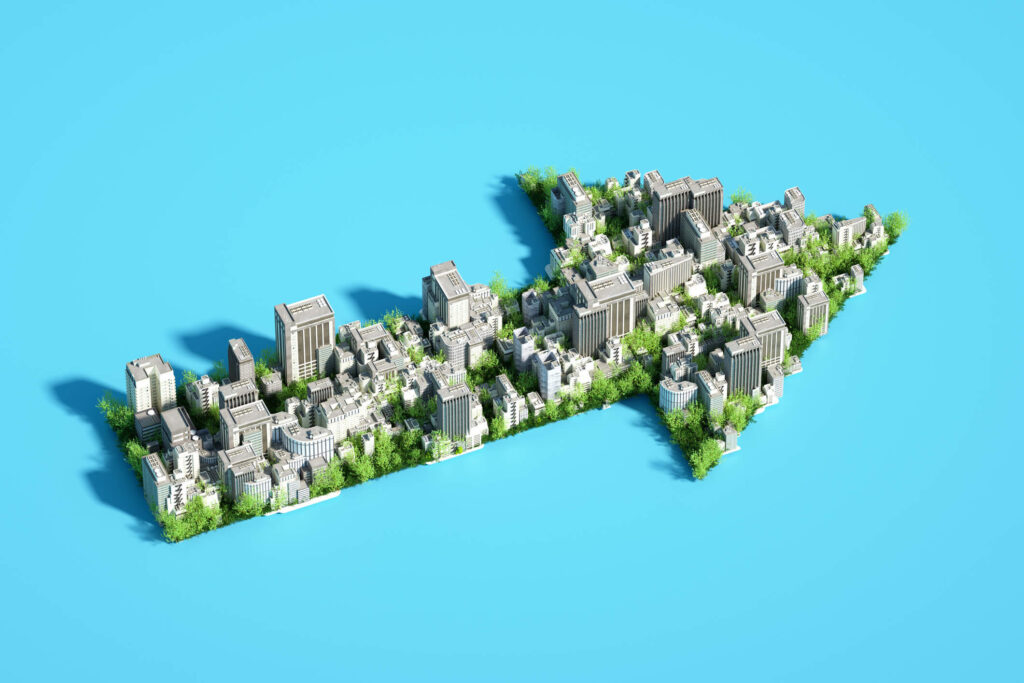
Digitisation of Buildings
Technology, together with electrification, plays an important role in the green transition, not only for the construction industry but also for transport (electric vehicles), manufacturing and production (sustainable automation), agriculture and other sectors.
Green technological solutions highlighted by Deloitte:
- 3D printing (Construction 4.0) and environmentally friendly architecture.
- Growing utilisation of automation and robotics.
- Construction that is industrialised, modular and prefabricated.
- Digital Twin in advanced building methods.
- Building Information Modelling (BIM).
- The use of advanced analytics, data, and AI on-site project management.
The digitisation of buildings improves energy efficiency and reduces the costs of buildings and construction, especially if integrated with IoT technologies. Schneider Electric is one brand that offers the right electrical equipment allowing for accurate measurements, accuracy and security, such as energy meters and software applications that show relevant energy parameters and indicate key performance.
Key digitisation solutions highlighted by Schneider Electric:
- Actionable data: more meters, including intelligent sensors, control and communication devices, etc., are needed for more data and insights in real-time.
- Simplified reporting and compliance: businesses must demonstrate that they are adhering to sustainability standards and they have a strong ESG rating.
- Active management: an efficient way of collecting data from digitally connected devices is crucial. With Schneider’s Electric ExoStruxure Power Advisor, your electrical system’s health may be continuously monitored remotely, and energy audits can be used to optimise performance.
- Optimised on-site energy with predictive modelling: by producing their own green energy with on-site energy options, owners and operators of commercial buildings can now sell their renewable electricity to the grid when prices are high, and they can use it when prices are low.
Greener Solutions from Electrical Designers
Electrical design engineers have many standards and technologies to specify future-proof electrical systems for buildings. Schneider Electric acknowledges that it is the responsibility of electrical designers to implement energy-efficient and financially-optimised electrical systems. The brand considers how governments, industry-based organisations, and local electric utility companies choose to regulate green building practices in important global markets.
Softwares
Schneider Electric offers many software applications that help engineers with the electrical distribution system. For example, EcoStruxure Power Design – Ecodial software enables engineers to more easily integrate energy-efficient design into their workflow compliant with the IEC 60364 standard. Read more about energy-efficient building standards here.
Energy Metering & Power Monitoring
Efficient energy monitoring can provide essential information on how a building is operating. It indicates environmental parameters (carbon dioxide, ventilation rates, air temperature, illuminance levels, Volatile Organic Compounds) and utility sub-metering parameters (gas, water, cooling, heat for heating energy and hot water, power and lighting).
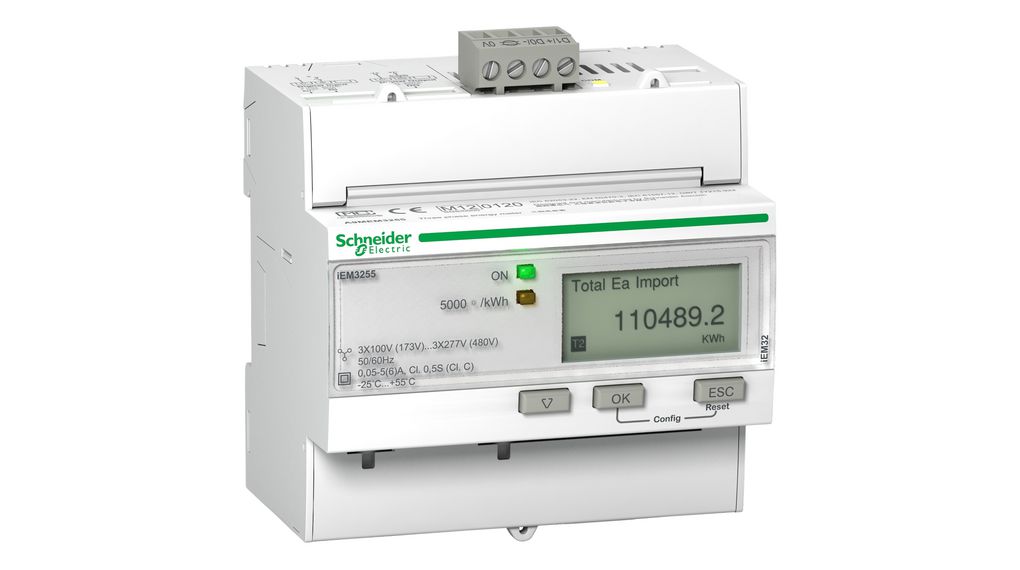
Schneider Electric offers products that are trustworthy, safe and environmentally friendly. The brand rigorously tests each product in laboratories following the strictest standards, such as IEC, MID, UL, etc. Its basic energy meters comply with single-phase or three-phase circuits, simple kWh meters, fully-featured dual tariff energy meters, and power metering for network monitoring applications. Data can be viewed locally or remotely. With the Acti9 series, the connection to power management software allows for taking the true ability of IoT digital power installation.
An appealing selection of single-phase DIN rail-mounted energy meters suitable for sub-billing or partial meter applications is provided by the Acti9 iEM2000 series energy meters. With this product family, building management may apportion energy costs and keep an eye on power use for individual units, office sectors and floors.
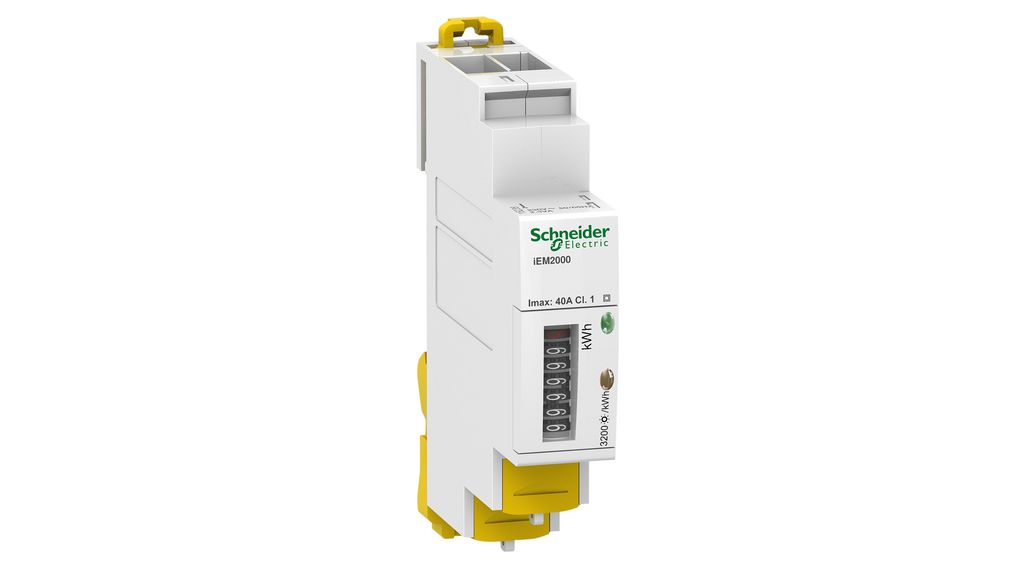
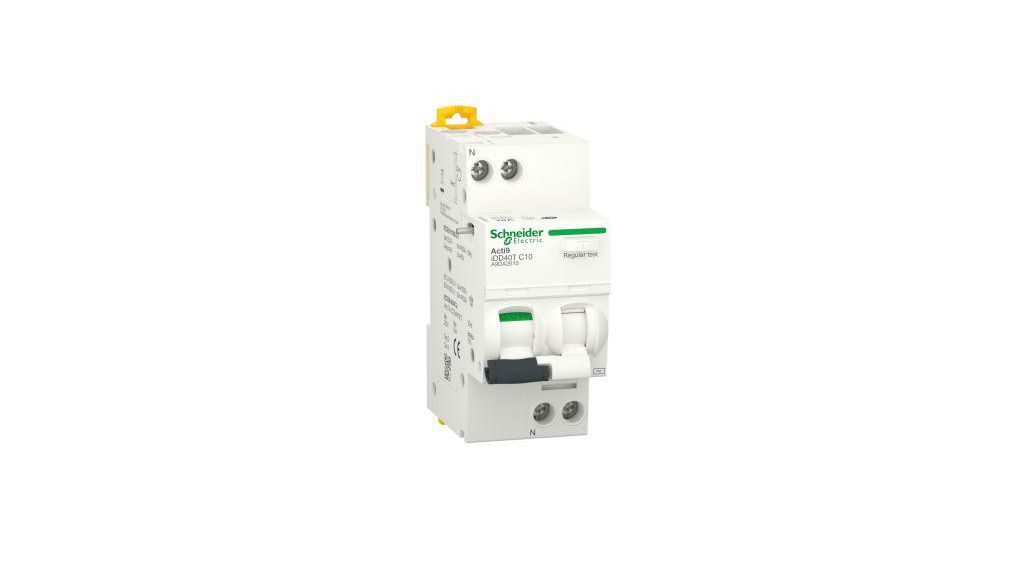
The Acti9 Active offers comprehensive protection for people, assets (improved fire safety), appliances, and circuits through integrated connection in all-in-one devices. It has built-in connectivity, an integrated miniature circuit breaker, a residual current device, and an arc fault detection device. It is compatible with EcoStruxure Panel Server and EcoStruxure Power Monitoring Expert for maximum benefits.
Perfect as a green solution, the best-in-class Modicon M221 logic controller has a brick-style or book-style option that needs minimal setup and offers flexibility. This straightforward remote operator panel allows you to visualise and maintain your machine quickly.

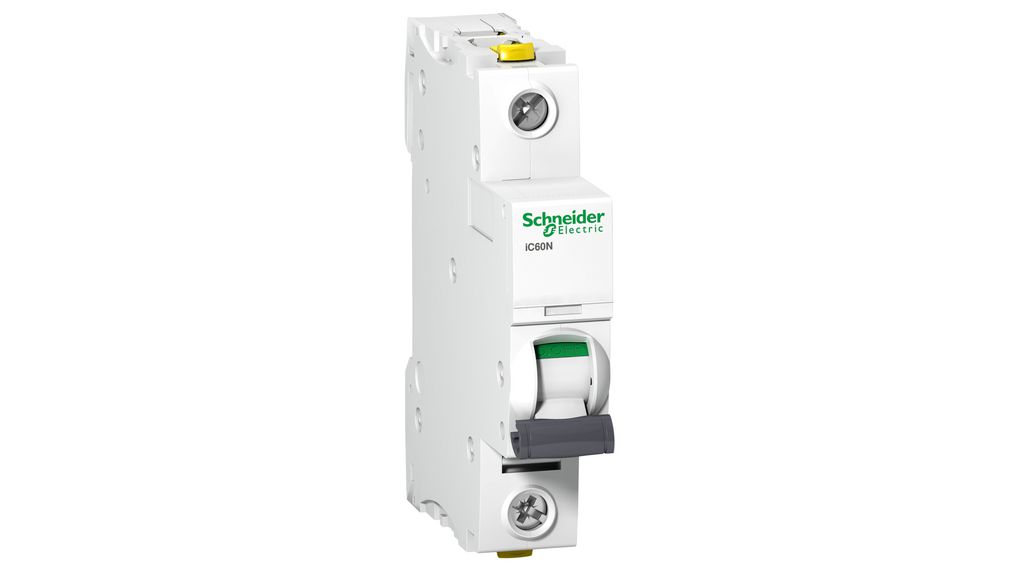
Resi9 circuit breakers offer the highest levels of safety for residential circuit protection, consumer units and plug-in circuit protection are included.
Distrelec is aware of the critical role that sustainable practices will have in expanding greener building solutions and creating a better environment. We are dedicated to enlightening and motivating our community on KnowHow to make more ecologically friendly decisions. For more green solutions, click the button below to find more sustainable and green products, or alternatively, read more of our articles on sustainability.





